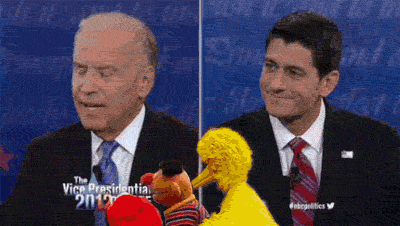 The fall of 2012 should leave no doubt that Tumblr is in the media business. When the national political conventions rolled around, Tumblr sent its first correspondents to cover the action. As GIFs took on a bigger role in storytelling during the Summer Olympics and the presidential campaigns, Tumblr was at the heart of it. And when Hurricane Sandy knocked online publishers like Gawker and BuzzFeed offline, they flocked to Tumblr to keep reporting.
The fall of 2012 should leave no doubt that Tumblr is in the media business. When the national political conventions rolled around, Tumblr sent its first correspondents to cover the action. As GIFs took on a bigger role in storytelling during the Summer Olympics and the presidential campaigns, Tumblr was at the heart of it. And when Hurricane Sandy knocked online publishers like Gawker and BuzzFeed offline, they flocked to Tumblr to keep reporting.
Tumblr is a media company in the same way Facebook and Twitter are — they offer a venue for people, as well as publishers, to share content. But Tumblr, which takes a more bloggy spin on social networking, wants to define itself as a place for editorial products, not just a repository of images from old sitcoms. Earlier this year Tumblr hired Jessica Bennett, a former editor and writer for Newsweek, as its executive editor. Bennett said her days are spent mining Tumblr for ideas and helping to promote all the ways publishers and individual writers are using Tumblr for storytelling. In our conversation we talked about why writers embrace Tumblr, the ways storytelling is being shaped beyond text, and why GIFs — just named the Oxford English Dictionary’s word of the year; sorry, YOLO — are ascendant. Below is an edited transcript of our conversation.
The simplicity of the Tumblr design they chose fit well with what they do on their blog network anyways. And it’s worked out really well. There was a ton of stuff that was breaking all throughout Tumblr that you wouldn’t have found elsewhere.
We use the Internet to express how we feel. We use memes to make points. In the past, people were making cartoons for The New Yorker. Now, maybe, they’re making GIFs on Tumblr.
But more to your point about GIFs and news, somebody said after we live GIFed the debate, that GIFs are like the political cartoons of our generation. I thought that was really smart because it’s true. We use the Internet to express how we feel. We use memes to make points. In the past, people were making cartoons for The New Yorker. Now, maybe, they’re making GIFs on Tumblr.
Of course, there are people who will say “can you really have nuance in a GIF?” I don’t think too many GIF makers are taking themselves too seriously. A lot of them are artists. But you can do some really smart stuff by combining actual old fashioned text with a GIF. So we’ve seen a lot of people doing that. People like Ann Friedman, formerly of GOOD Magazine, who has created this whole name for herself by using GIFs to comment on social issues. It’s a kind of fun, interactive way to engage on topics that, yes, are serious.
And I think it’s a way to keep people entertained. Even with the binders-full-of-women thing, and more broadly with political memes, that’s the kind of thing that 10 years ago, had Governor Romney said that, I’m sure talking heads all over the world would have commented on it and we would have gotten really sick of hearing them repeat the same thing over and over. But the meme kind of takes on a life of its own and becomes endlessly interesting. There are GIFs that evolve out of it, there are Halloween costumes that were all over my Facebook feed, that have essentially evolved out of this gaffe that turned into a meme. This is probably going way broader than you were asking, but the idea of political memes has really changed the way we cover news and cover politics.

When I was doing the Newsweek Tumblr, I don’t think people were following us because we were Newsweek, because on Tumblr it was a bunch of young people who were like, “Oh, wait, Newsweek still exists?” We actually got comments like that. But they liked what we were doing content-wise. So they decided to follow us. And for Newsweek, it kind of opened them up to this whole new audience that they hadn’t reached in probably decades. So I think there’s something to be said about the quality of content, because it’s about what you post, not about who you are or how many followers you have.
For news organizations, I think there are really innovative ways you can use Tumblr as a reporting tool. WNYC has done this a bit and Yahoo News did this — where you may have your main story on your site, but then you have overflow. As reporters, how often do we have to cut quotes we spent days, weeks, and months getting that are really important but won’t fit into the space of copy we have allotted? Or just comments that start flooding in from other people’s stories. People have been able to use Tumblr as supplements to their general news coverage. And I think they’ve embraced the idea that content on Tumblr should be different — nobody is going to follow an RSS feed they can get on your website. So people are using it in really interesting ways.
Part of the reason we exist as an editorial arm is to help people see what is actually happening on this platform because it can be really overwhelming.
What I’ve been trying to do is partner with mainstream news outlets, or legacy news outlets, to co-produce, co-publish, or syndicate the content that we’re putting out so we can reach a different audience. It’s easy for us to reach our own audience — we know them, they’re there. We have all sorts of ways of getting to them. But I think the idea is to broaden it so that people who would read a news magazine or listen to NPR would be interested in the stories we are telling.
We’ve partnered with WNYC, we’ve partnered with MTV News, the Daily Beast, where we’re bringing the content to both audiences. That’s been really successful for us because it’s this idea that this isn’t about competition for us at Tumblr — we just want to tell good stories and get them out to as many people as possible. If that means sharing out content we’re completely happy to do that. If we’re producing quality content that places like NPR want to run, then great.
For example, there’s this huge, huge group of fans of One Direction, the U.K. boy band, within Tumblr. They were all using these really specific tags to talk to each other and create fan fiction and animated GIFs of the boys in the band, to share songs and stories. There were fashion blogs popping up and there was something called “Imagine,” where girls would describe their perfect date with Harry, and then they would actually illustrate it via the outfits that they would wear.
So when we were researching a piece on One Direction, we did a feature story — we actually went out to California and produced a video with a bunch of Directioners, which are the super fans, at a couple of shows. And we produced a guide to fandom within Tumblr. I spent hours and days tracking this tag in the Tumblrsphere, and it moved so quickly that I could barely keep up with it.
Nobody really knew of its existence other than the fans themselves. When the piece came out, we got tons of death threats by Directioners, who thought that we had broken into this secret world that they had, that they didn’t think any grownups were allowed into, essentially.
It was just really interesting to see. You’re on a public website, you’re using the web to document everything you feel, and it’s all about sharing. Yet, these teenagers felt this was still a private community for them. And that exists again and again and again. There’s so many fan cultures on Tumblr. You can create these micro-communities, and the challenge for me is finding the micro-communities.